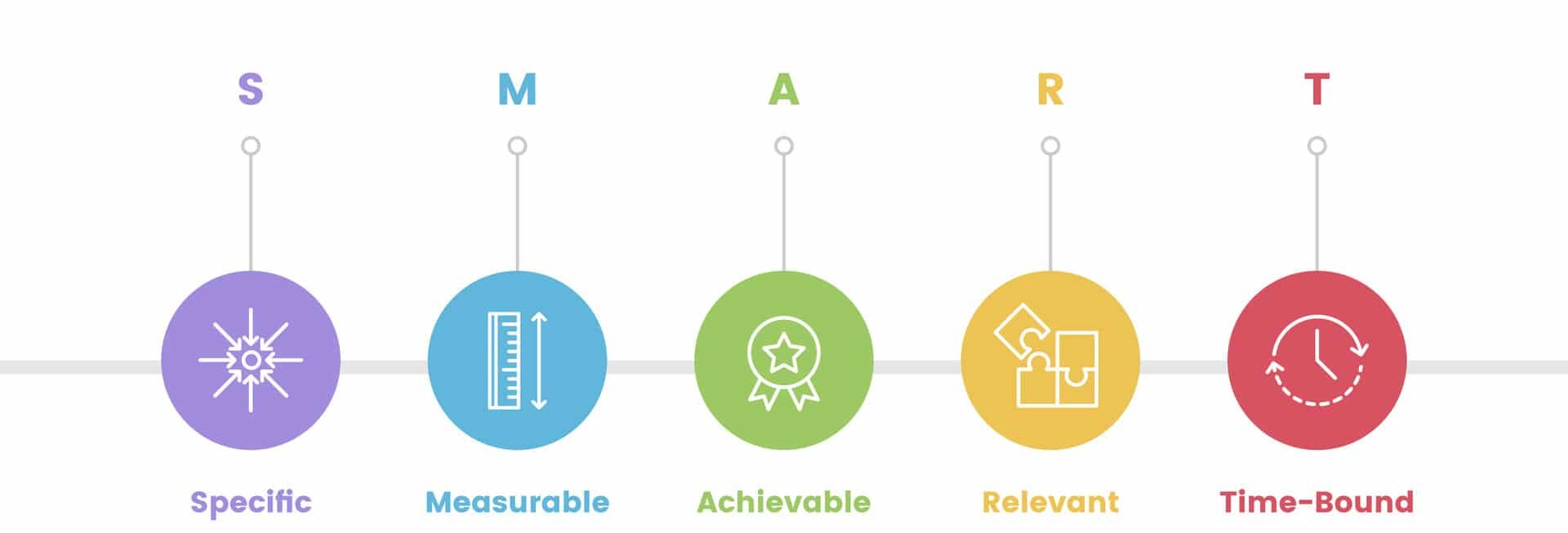Physical Address
304 North Cardinal St.
Dorchester Center, MA 02124
Physical Address
304 North Cardinal St.
Dorchester Center, MA 02124

Have you ever set a goal, only to abandon it weeks later? You’re not alone. Many people struggle to turn their aspirations into reality. The key to success lies in setting SMART goals—goals that are Specific, Measurable, Achievable, Relevant, and Time-bound.
By using the SMART framework, you can create a clear action plan, stay motivated, and track progress effectively. Whether you want to improve your fitness, eat healthier, or develop a new habit, SMART goals can help you achieve lasting results. In this guide, you’ll learn exactly how to set SMART goals and achieve them successfully!

SMART is an acronym that breaks down goal-setting into five essential criteria:
The SMART framework keeps you focused, accountable, and motivated. Unlike vague resolutions, SMART goals provide structure, making them easier to achieve.
Example: Instead of saying, “I want to get healthier,” specify, “I will eat three servings of vegetables daily and exercise four times a week.”
Example: “I will run 5K in 30 minutes by gradually increasing my running distance each week.”
Example: “I will save $200 per month for six months instead of aiming for an unrealistic $1,000 per month.”
Example: If stress relief is a priority, setting a meditation goal is more relevant than a weightlifting goal.
Example: “I will complete a 30-day yoga challenge starting on the first of next month.”
Even well-intentioned goal-setters make mistakes. Here’s what to watch out for:
Pair your new goal with an existing habit to make it easier to follow.
Example: “After brushing my teeth, I will meditate for five minutes.”
Having someone to check in with keeps you on track. Share your goal with a friend or join a support group.
Mentally picturing your achievement can increase motivation. Spend a few minutes each day visualizing your progress.
Rather than focusing on a large goal, divide it into small, achievable steps.
Example: If you want to write a book, set a goal to write 500 words per day.
Use a habit tracker, fitness app, or journal to monitor your improvements.
Recognizing milestones boosts motivation. Treat yourself when you hit a goal checkpoint.
If your goal becomes irrelevant or too challenging, tweak it instead of giving up.
Setting SMART goals can transform your personal growth, health, and wellness journey. Now that you understand how to set SMART goals and achieve them, it’s time to take action.
✅ Step 1: Choose one SMART goal today.
✅ Step 2: Write it down and make it measurable.
✅ Step 3: Share it in the comments and commit to your journey!
By following these strategies, you can build lasting habits and turn your dreams into reality. Start today, and watch your success unfold!